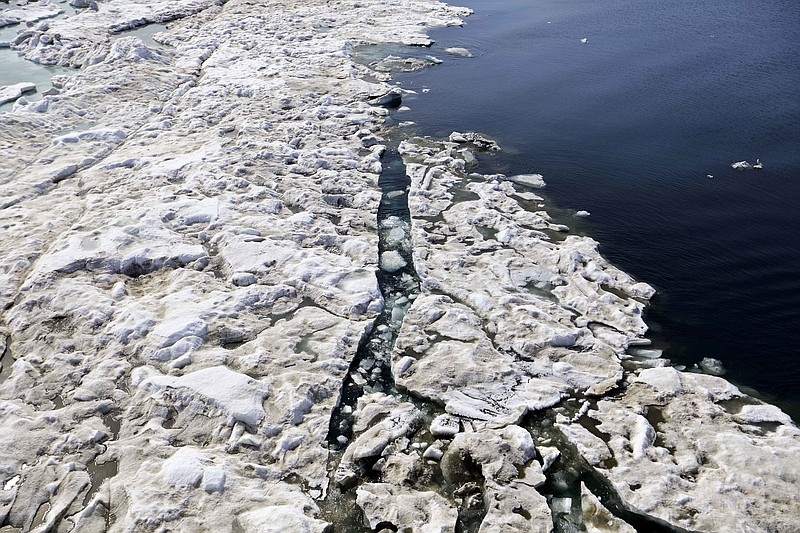Photo Gallery
Rock-Opera Show @ UCA
The East Village Opera Company makes a stop on its national tour in Conway for two nights. The upbeat group transformed classical music into high-adrenaline rock styled songs.
THE ARCTIC CIRCLE - When ice floes stretch to the horizon in the Arctic Circle, threatening to strand normal ships, icebreakers are in their element.
For big vessels, they can turn quickly to avoid big blocks of ice, and can stop fast. They can slice through many ice fields without a shudder. And when the going gets rough, they can push their mighty bow on top of the ice and bust it up through the sheer force of the ship's weight.
Icebreakers, like the one transporting Associated Press reporters and international researchers through the Northwest Passage, are the battering rams of far northern climes. Such specially built ships ply waters of the Arctic regions of Canada and Russia, the Baltic Sea and the Great Lakes of North America - places where thick ice forms at least part of the year.
They are used to transport or install equipment. And they escort or come to the aid of ships without icebreaking capabilities.
The MSV Nordica, operated by Finnish company Arctia, a government-owned enterprise, is equipped with several heavy-duty engines and a hardened bow and rounded hull. The ship's 13,000 tons break the ice from above.
When ice is particularly thick, the vessel can turn around and use its huge azimuth thrusters - a versatile type of propeller - to chew a path through the ice.
There are more than 100 dedicated icebreaking ships around the world. Russia has over 40 - by far the most - due in part to its long Arctic coastline. The country also has the only nuclear-powered icebreakers - and one became the first surface vessel to punch its way through to the North Pole in 1977.
The United States currently operates one heavy icebreaker, the USCGC Polar Star, and one medium icebreaker, the USCGC Healy. Plans are under way for the U.S to build several new icebreakers that would enter service in the next decade.
Among the more unusual icebreaking vessels are hovercraft that can create waves under the ice, causing it to quiver and snap.
NEXT: Rule No. 1 for driving a 13,000-ton icebreaker: Go slow
PREVIOUS: Northwest Passage's history marked by dangers, death
FIRST: Global warming melts ice, alters fabled Northwest Passage


